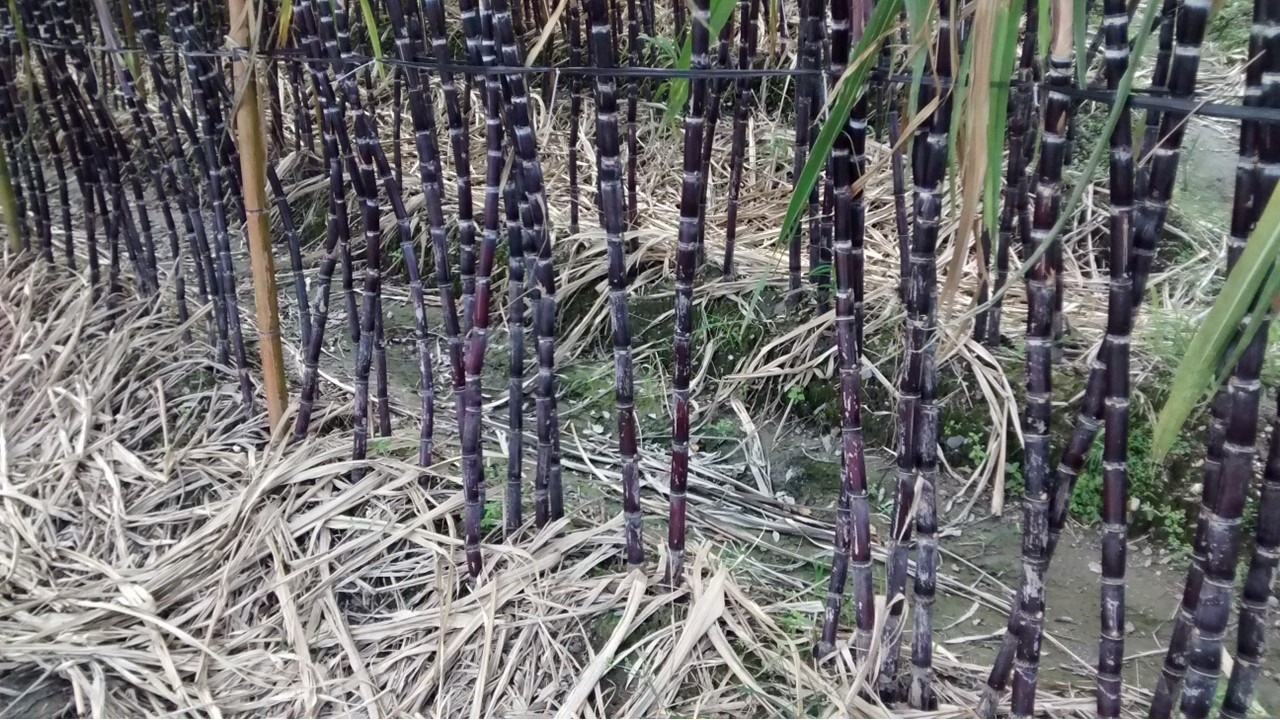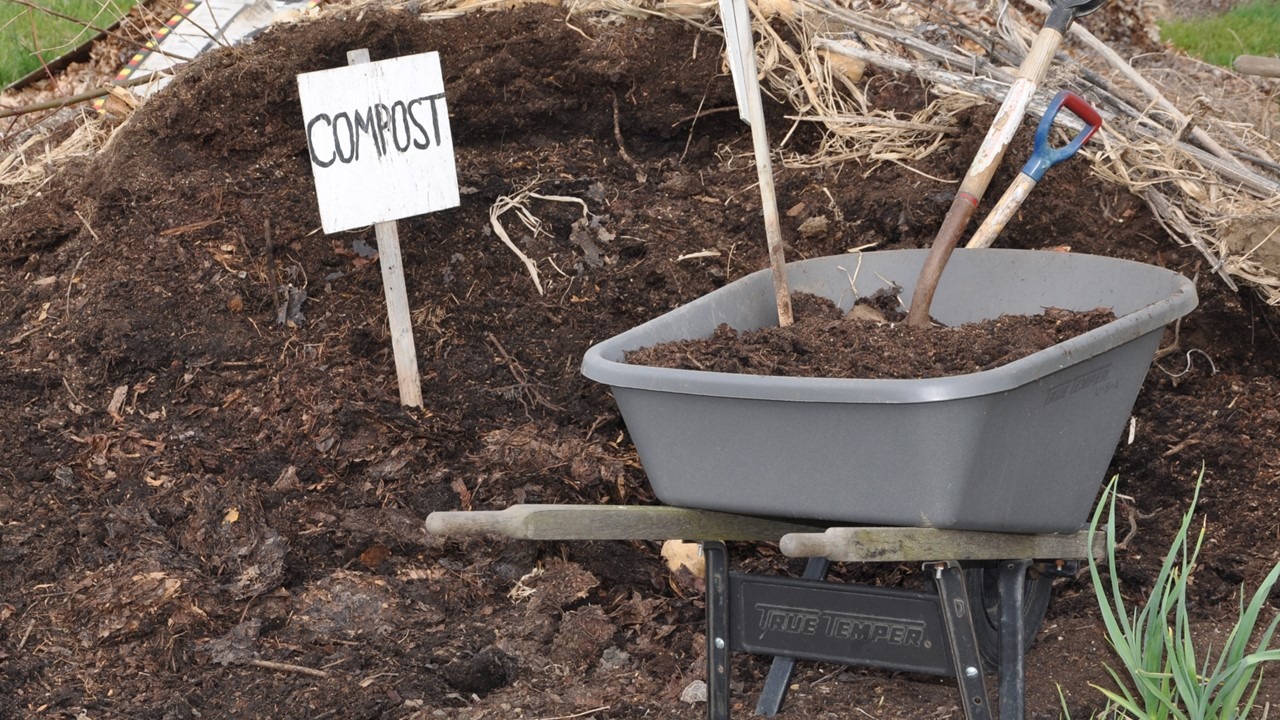The manufacturing industry is closely related to people’s lives, and it has the greatest impact on living quality and the environment. Since the industry requires a wide range of materials to function, we have gradually substituted natural materials with artificial materials that are mostly eco-unfriendly. To maintain sustainability, people have begun to use sustainable materials. This article will introduce numerous popular sustainable materials, their applications, and why they are considered sustainable.
What are sustainable materials?
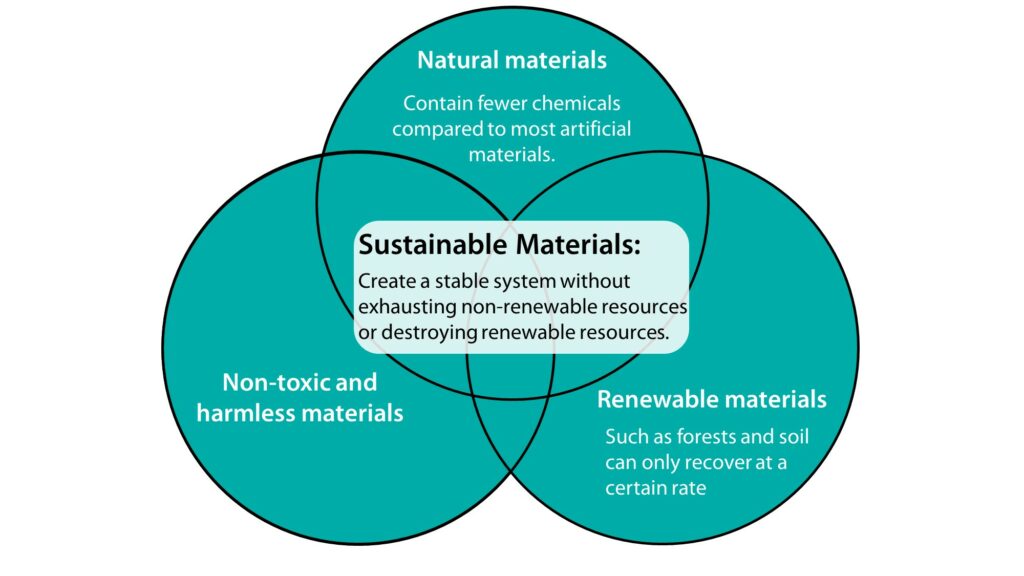
Sustainable materials (materials that can be used continuously) are used by people to manufacture products and sustain the economic system. Unlike other conventional materials, sustainable materials create a stable system without exhausting non-renewable resources or destroying renewable resources. There is a diverse selection of sustainable materials such as natural resources that are extracted and managed sustainably or minerals that can be infinitely reused. Replacing traditional materials such as plastics with sustainable materials will minimize adverse impacts on the environment, society, and economy.
Types of sustainable materials
Type 1: Natural materials
Natural materials such as wood and minerals are the Earth’s gift to humanity. Almost all raw materials we use come from natural materials that are unprocessed and contain fewer chemicals compared to most artificial materials, meaning that they are safer and can be reused.
Type 2: Renewable materials
Some natural materials are non-renewable. For example, the total amount of petroleum is limited and it takes several million years to form, far slower than the rate of human consumption. Furthermore, plastic products can only be downcycled as they cannot be completely recycled and regenerated. Other examples such as forests and soil can only recover at a certain rate, thus in order to keep the rate of consumption lower than the rate of regeneration, sustainable management methods must be applied to utilize these materials and ensure their renewability.
Type 3: Non-toxic and harmless materials
After artificial processing, natural materials usually become harmful to the environment, and they cannot be broken down after use. Examples include plastics and synthetic fibers. Whether natural or artificial materials, non-toxic substitutes are also a type of sustainable material.
20 Sustainable materials
- Wood
Wood is a type of natural, renewable, non-toxic, and harmless material. Since antiquity, people have used wood to produce various daily necessities such as houses, fences, boats, and furniture. It is also used as the raw material of paper, a medium for communicating knowledge. Due to the versatile applications of wood, deforestation occurs at a rate far higher than regeneration, thus sustainable forestry management is required to ensure forest renewability, as well as to contribute to biodiversity and mitigate climate change.
-
Bagasse
Sugarcane is an important source of sugar for people, and it is also a crop with extremely high photosynthesis efficiency and drought resistance. Bagasse is the byproduct of producing sugarcane juice or sugar. Due to its sugar content and high concentrations of lignin, bagasse cannot be used as fertilizer or animal feed directly. Now, people use bagasse to manufacture eco-friendly materials to replace plastics, and it is also fermented to make biofuel, making it a natural, renewable, non-toxic, and harmless material.
For more detailed information about bagasse, please read: What is bagasse? 6 Benefits of Sugarcane Bagasse for Food Packaging.
-
Coconut shell
Coconut is a very popular food in tropical countries. Coconut juice and meat are rich in sugar and are edible. The coconut shell is extremely rigid; after being crushed and reassembled, it can be used in food containers, potted plants, and building materials, making it a natural, renewable, non-toxic, and harmless material.
- Bamboo
Bamboo is one of the fastest-growing plants in the world, hence it is widely cultivated for sustainable material purposes. In tropical countries, people often consume bamboo shoots and use mature bamboo as a material for houses and furniture. Bamboo can also be used to manufacture tableware and dinner plates, making it a natural, renewable, non-toxic, and harmless material.
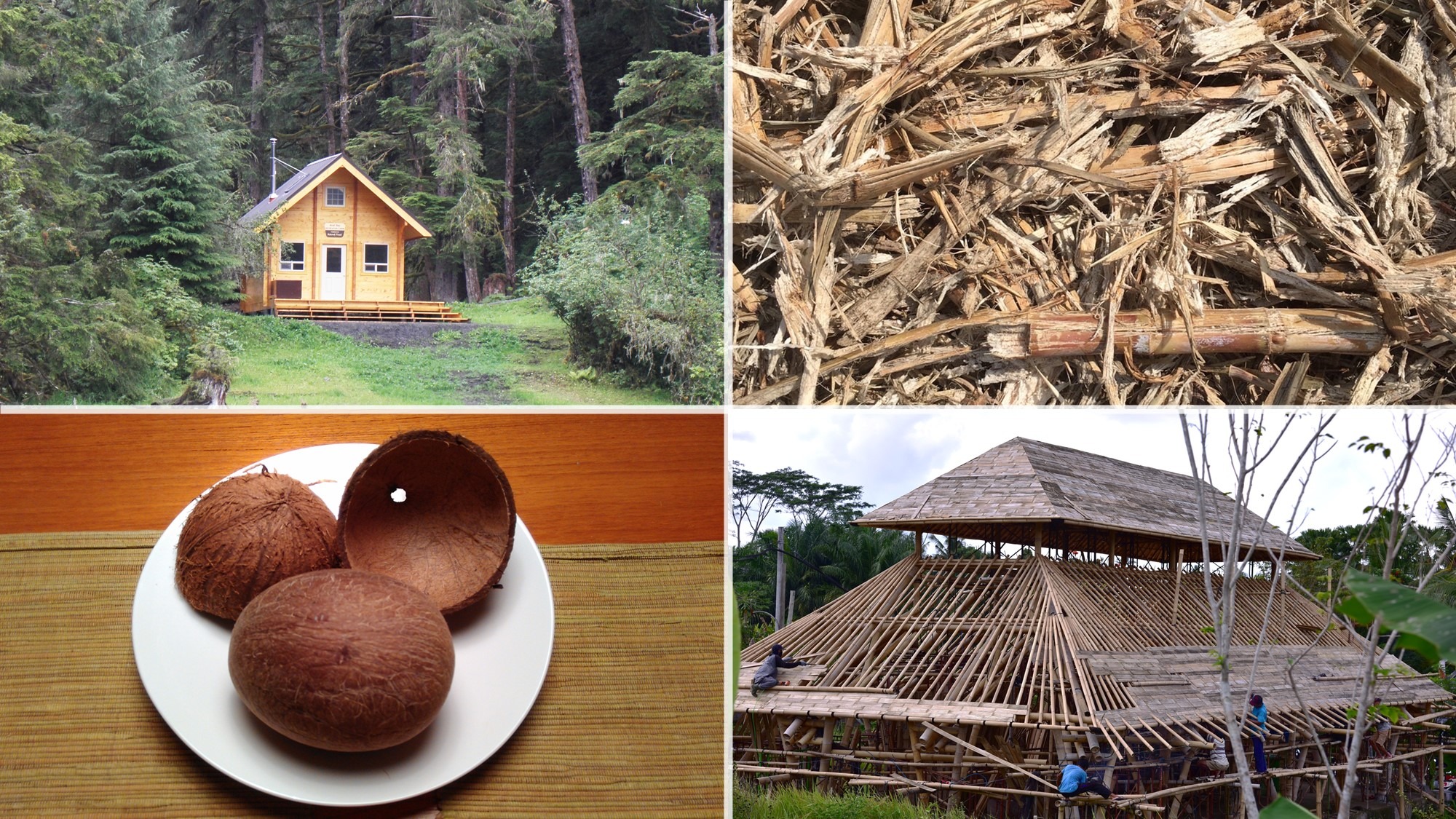
-
Steel
After the iron ore is collected, it can be made into steel through smelting and adjusting its composition. A large part of our daily life is made of steel, including cars, home appliances, furniture, water towers, containers, ships, and bridges. If steel products are no longer usable, they can be recycled and smelted to make new products without producing untreatable residues, making it a natural and renewable material.
-
Coffee grounds
Coffee is an important refreshment for people, and the coffee market is exhibiting rapid growth, exceeding US$100 billion in 2021. Pour over, siphon, or espresso coffee all leave behind coffee grounds that can be used as a material for cleaning, fertilizing, repelling insects, and deodorizing at home. In terms of industrial applications, coffee grounds can be made into automotive lights, straws, shoes, and deodorizing agents, making it a natural, renewable, non-toxic, and harmless material.
-
Seeweed
The ocean takes up the vast majority of the Earth’s surface, and seaweed is the most common plant in the ocean, supplying large quantities of oxygen for the Earth, and it is also an important source of food for marine organisms. Seaweed is rich in nutrients and minerals, thus it is an ideal material for producing animal feed and fertilizers. Its unique gelling, viscous, and emulsifying properties endow it with diverse applications in food processing, papermaking, textile, winemaking, cosmetics, paint, dental impressions, and printing, making it a natural, renewable, non-toxic, and harmless material.
-
Rubber
Natural rubber comes from the sap of rubber trees. After solidification, it will become highly elastic and waterproof, thus it is used as a raw material for tires, shoe soles, waterproof rings, electric wires, and elastic bands. Although synthetic rubber has been developed for more extensive applications – resulting in the fact that most rubber consists of synthetic rubber – natural rubber is still an important natural, renewable, non-toxic, and harmless material.
-
Cork
Cork is derived from the bark of cork oak, which can be harvested every few years without jeopardizing the tree’s growth. Compared with ordinary wood, cork is lighter, waterproof, heat-insulating, sound-proof, and shock-resistant, making it a natural, renewable, non-toxic, and harmless material ideal for the production of corks, soundproof walls, and billboards.
-
Glass
Glass is a rare transparent material consisting of minerals such as quartz sand, soda ash, feldspar, and limestone as the main raw materials. After melting, silica-based quartz glass is formed, which can be used in various instruments, doors, windows, utensils, and screens. Used glass goes through a decolorization and impurity removal process before it is smelted to create new glass products, making it a natural and renewable material.
-
Bioplastics
In light of the wide usage of plastics even though they are not sustainable materials, people started to develop bioplastics as substitutes. Bioplastics convert natural materials such as corn and beets into synthetic plastics, which possess similar physical properties to plastics. Some bioplastics can be decomposed by organisms and returned to the environment, so they can replace conventional plastics and be made into food containers or bags. Since the raw materials are plant-based, they are considered a type of renewable material.
-
Rayon
Rayon is made of cellulose derived from natural plants, which can be woven with other types of fibers. The soft, comfortable hydrophilic fiber is mostly used in ribbons, undergarments, and curtains. Since chemical processing is needed during the production process, rayon is only considered a renewable material.
-
Rice husks
Rice husks are left behind after rice milling, and their weight accounts for roughly 20% of the grain. Due to their low water content, rice husks are often used as fuel in underdeveloped countries. After burning, the residue contains large quantities of silicon, which can be used as a raw material for the semiconductor industry. Rice husks are breathable and degradable, hence it can be used directly as a material for manufacturing flower pots and food containers, making it a natural, renewable, non-toxic, and harmless material.
-
Cotton
Cotton is one of the most widely used natural materials in the textile industry for creating sturdy, absorbent, soft, and breathable fabrics. However, due to heavy demand for cotton and the rise of fast fashion, a lot of cheap cotton is needed, but it is a water-consuming crop that is not resistant to diseases and pests; this frequently leads to the improper use of water resources and pesticides. Using organic cotton can turn cotton into a natural, renewable, non-toxic, and harmless material.
-
Flax
In light of cotton’s destruction of the environment, people have also begun to use flax as a textile material, which requires almost no irrigation and is relatively resistant to diseases and pests. Flax offers a strong, breathable, and coarse texture that is ideal for making military fabrics, canvas, and aircraft wing skin. Flax is a natural, renewable, non-toxic, and harmless material.
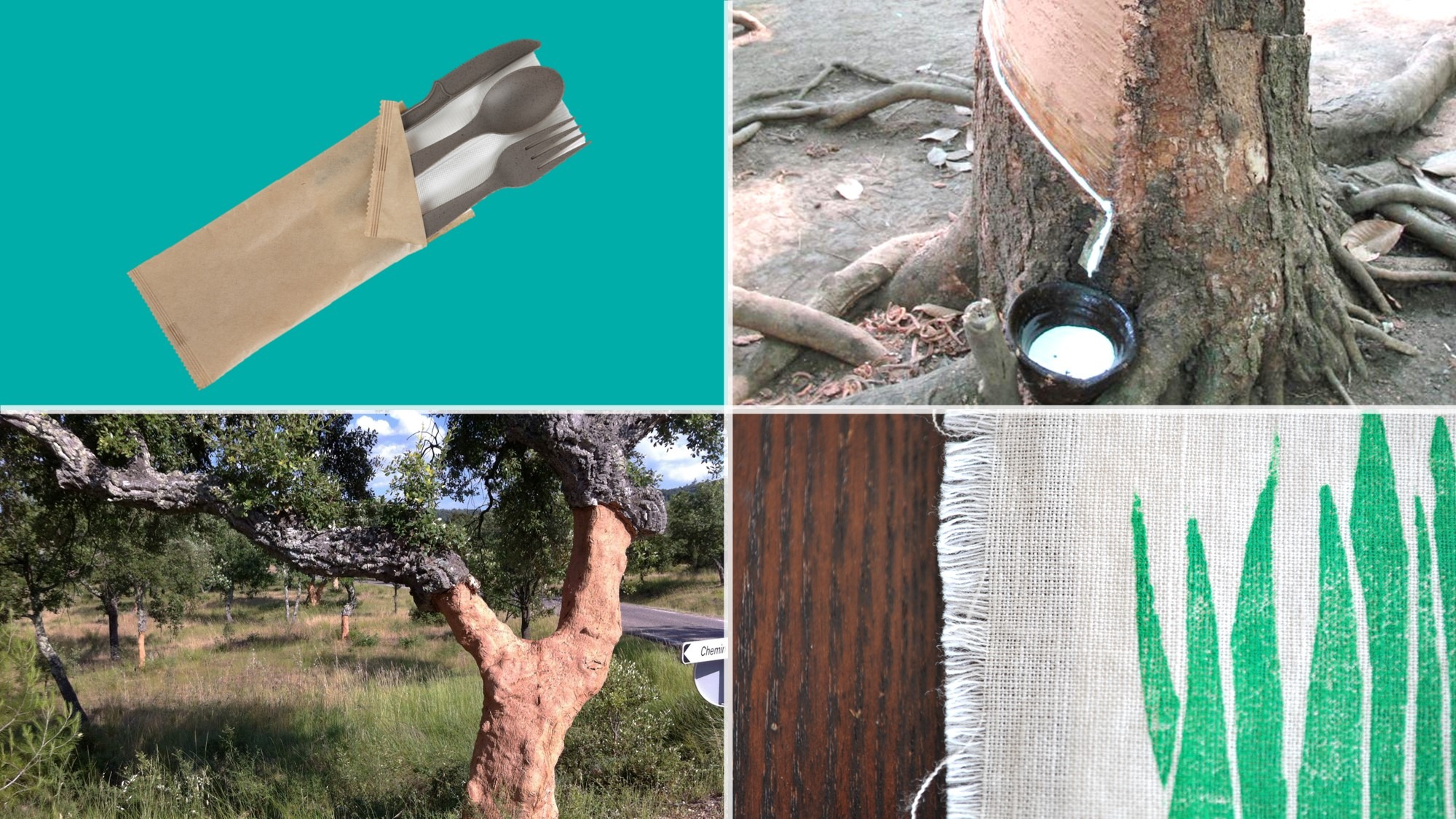
-
Recycled PET bottles
Since PET bottles are made of polyethylene, a material often used for manufacturing food containers, it is sometimes mixed with other materials. It is a type of plastic that is easily recycled to produce wigs, zippers, boxes, file folders, inner linings, and garments, thus it is a type of renewable material compared to virgin plastics.
-
Recycled ocean plastics
Plastics in the ocean continue to release microplastics, prevent sunlight from penetrating the water and are often accidentally ingested by marine life, causing significant impact on the environment. People collect ocean plastics and remanufacture them into ballpoint pen barrels, notebook cases, and glasses to replace some conventional plastics; thus, it is a type of renewable material compared to virgin plastics.
-
Gypsum
Gypsum is a common mineral that is used as a building material because it has a certain degree of fire resistance. Furthermore, gypsum is an important soil conditioner and tofu coagulant, and it can also be used to make statues, impressions, and surgical splints, making it a natural, renewable, non-toxic, and harmless material.
-
Feathers
Feathers are a byproduct of animal husbandry, and they is used as a material for making feather dusters, woolen quilts, decorations, fertilizers, and animal feed, making it a natural, renewable, non-toxic, and harmless material.
-
Recycled paper
After recycling, paper can be broken down into pulp and reproduced. However, the recycled paper may not be as white or refined as virgin paper, thus it is mainly used for toilet paper, cardboard, and newspapers, making it a renewable material.
6 Sustainable Materials for Food Packaging
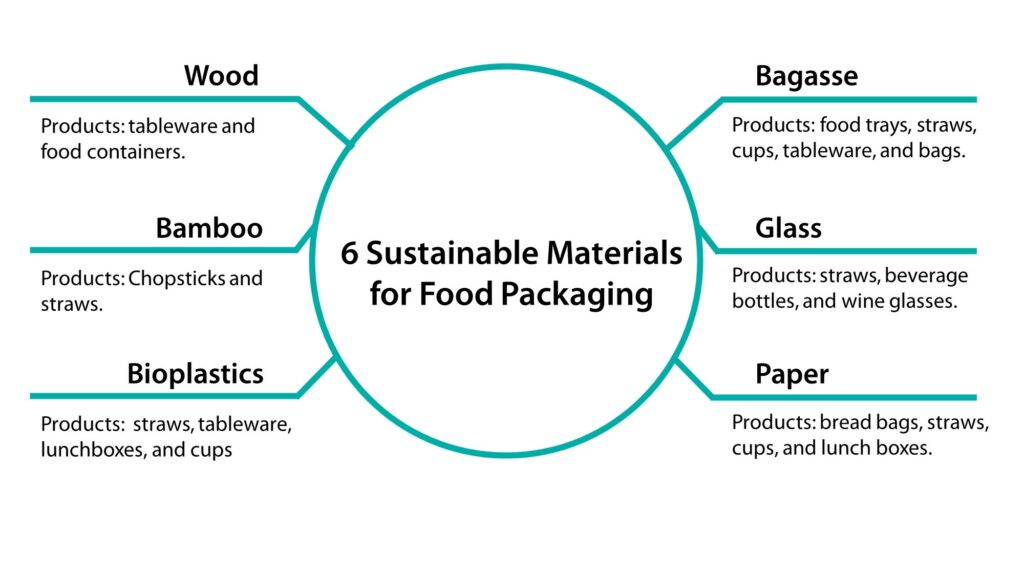
-
Bagasse
Bagasse is an agricultural byproduct. Thanks to its strong fibers, it can be remanufactured into food packaging products such as food trays, straws, cups, tableware, and bags. One of the best examples in the industry is renouvo, whose products have acquired compostability certification and BSI carbon footprint certification to ensure their low-carbon properties and degradability.
-
Glass
Glass is waterproof, non-toxic, and harmless, hence it can be made into straws, beverage bottles, and wine glasses. For instance, the Coca-Cola glass bottle is a very popular way of serving the sparkling drink. However, one must be extra careful when using glass because it is very fragile.
-
Paper
Paper is widely used for food packaging, examples include bread bags, straws, cups, and lunch boxes. However, since the paper is not resistant to water, it must be coated in a layer of plastic that acts as a barrier to oil and water, thus it is extremely difficult to recycle.
-
Wood
After simple processing, wood can be used for tableware and food containers, making it a natural food packaging with a long-standing history. However, some wood is coated with waterproof paint to prevent mildew, so people should avoid these products with diminished degradability.
-
Bamboo
Bamboo is a common food packaging in tropical countries. Chopsticks, a traditional Chinese tableware, are made of bamboo. Also, bamboo dishes are prepared by stuffing ingredients into bamboo, while thinner bamboo such as arrow bamboo can be cut and used as natural straws.
-
Bioplastics
Bioplastic straws, tableware, lunchboxes, and cups are rapidly replacing their plastic counterparts. In particular, polylactic acid (PLA) is the most commonly known bioplastic. Although PLA originates from corn, a renewable natural material, the decomposition requirements are more rigorous, hence it can only be broken down in a high-temperature industrial composting facility. Therefore, its sustainability relies on the local organic waste disposal system.
6 sustainable materials for clothing
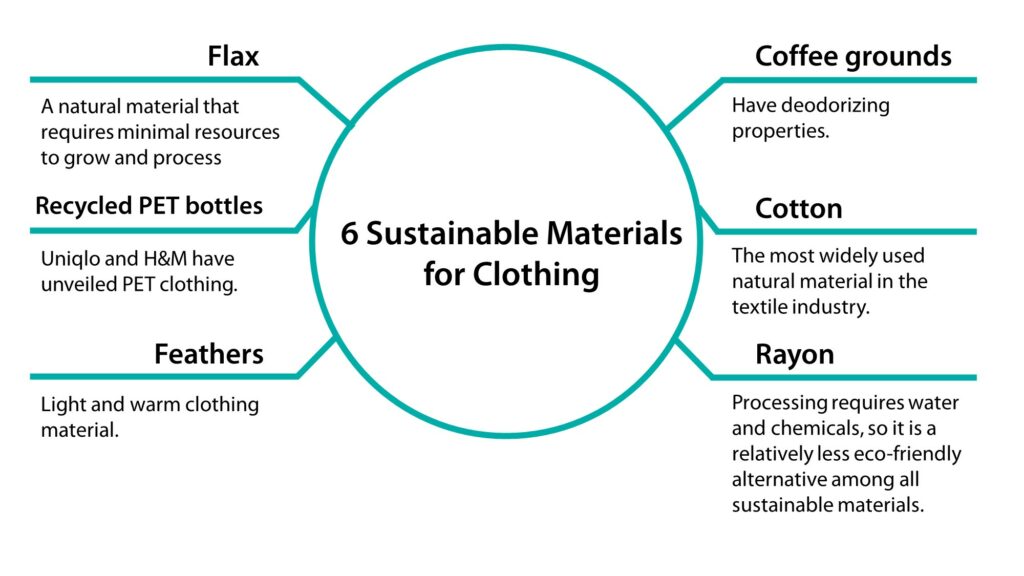
-
Coffee grounds
Due to the deodorizing properties of coffee grounds, they can be used as raw materials for artificial fibers in clothing or shoes to reduce the use of plastics and enhance wearing functionality.
-
Cotton
Cotton is the most widely used natural material in the textile industry. Organic or recycled cotton is both sustainable and safer for the skin.
-
Rayon
Rayon processing requires water and chemicals, so although the raw material comes from renewable plants, it is still a relatively less eco-friendly alternative among all sustainable materials.
-
Flax
Flax is an eco-friendly natural clothing material that requires minimal resources to grow and process, making it extremely versatile.
-
Recycled PET bottles
In recent years, the technology for turning recycled PET bottles into textile materials has become increasingly sophisticated, and numerous major labels such as Uniqlo and H&M have unveiled PET clothing to reduce the use of artificial fibers.
-
Feathers
Feathers are mainly used for the lining of coats or decoration. They are a type of light and warm clothing material.
Why are sustainable materials important to us?
Using sustainable materials protects us from a future of resource exhaustion. Most sustainable materials are safe, non-toxic, and beneficial to our health. Furthermore, the vast majority of sustainable materials can be recycled or decomposed completely after use, making them an eco-friendly choice. Sustainable products produced with sustainable materials allow us to practice the philosophy of sustainability in life.











